Location
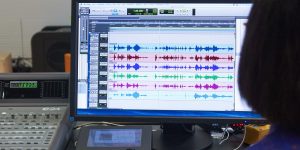
Sonic Saturday – “Medium Sonorum”
The Sonic Saturday Medium Sonorum computer music matinée at Anton Bruckner University’s 20.4 channel concert hall, the CMS Sonic Lab, presents recent works by Tobias Leibetseder, Erik Nyström, Astrid Schwarz and Tania Rubio, as well as a rarely performed classic, the 36 enfilades pour Piano et Magnétophone by Luc Ferrari with Kaori Nishii at the piano and Angélica Castelló on the mixing desk.
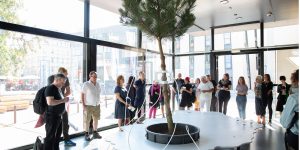
One Tree ID − How To Become A Tree For Another Tree
Agnes Meyer-Brandis (DE)
One Tree ID is a biochemical and biopoetic odor communication experiment between visitors and a black pine. For the project, the artist created a perfume from the gas emissions of the individual tree. These volatile organic compounds (VOCs) are the communication system of the plants and produce what we recognize as the fragrance of a forest.
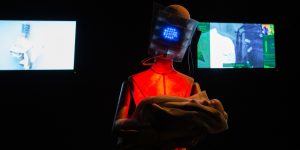
ROBOTIKA, The Nannybot
Joaquín Fargas (AR)
Robotika is a cyber nanny whose duty is to preserve the human race. Robotika challenges the limits of the human being concept. It is a robot vested with artificial intelligence that shall act as a “galactic ark,” looking for a suitable environment for human development.
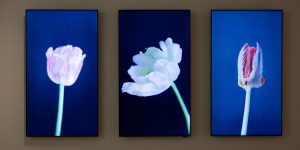
Mosaic Virus
Anna Ridler (UK)
The video work Mosaic Virus is a contemporary version of a classic Dutch still life for the twenty-first century. The project is based on 10,000 tulip photographs which were used to train a model. An artificial intelligence (AI) thus generates an endless flood of images of imaginary tulips whose appearance is directly controlled by the current Bitcoin course. Anna Ridler focuses on current speculation in crypto currencies and draws historical parallels in this way to the “tulip mania” of the 1630s in the Netherlands and Europe. At that time, horrendous prices were paid for tulips that were striped. These stripes were caused by a disease – the so-called mosaic virus.
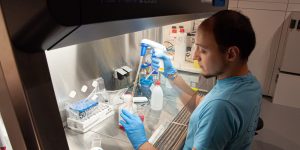
Lat BioLab
UMAI Maimonides University (AR)
Is Humanity near its end? Is our community in an evolutionary process of collective thought? These are some of the questions we ask ourselves at the Lat BioLab.
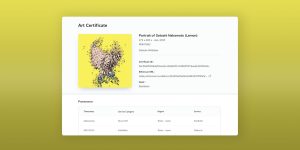
Startbahn, Inc., Tokyo
Startbahn is developing a blockchain infrastructure for art registry and trade. Art Blockchain Network (ABN, tentative name) enables all art-related stakeholders to share an artwork provenance and to trade safely. Startbahn aims to broaden the market potential and liquidity for art. In addition to ownership proof and transition, users can make contracts on copyright regarding a specific artwork on ABN, including artist’s resale rights for the secondary art market. Moreover, including our web platform, multiple art-related companies have already joined the ecosystem of ABN. The number of partners is increasing rapidly.
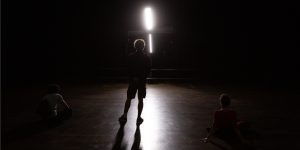
TORSO #1
Peter Kutin (AT)
TORSO #1 is a sound sculpture that is visually reminiscent of a klopotec. This windmill-like wooden construction serves as a scarecrow in vineyards as it mechanically generates sounds and vibrations. Here, an electro-acoustic system of four 100 V loudspeakers rotates at different speeds, generating feedback patterns and modulating sound signals and the spatial sound itself. The targeted acceleration and deceleration of the rotating of the four-voice system serves as the central compositional means for the 35-minute piece – the sculpture becomes an abstract, audiovisual instrument. Warning: The stroboscope-like visual stimuli can cause physical discomfort (dizziness, nausea, etc.) or epileptic seizures in susceptible individuals.
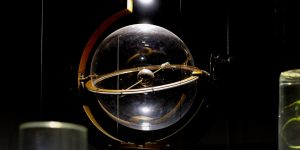
Biosignal_Cybernation
Y2K – Chiao-Chi Chou (TW), You-Yang Hu (CN)
Biosignal_Cybernation is an apparatus that controls plant growth. By using both phototropism and apogeotropism, plants can be shaped by humans.
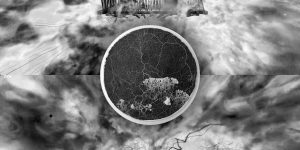
Slime mold reality
Bill (BiCheng) Zhou (CN)
This art piece combines virtual and biological spaces. The Physarum polycephalum (slime mold) is a superorganism that consists of a large number of single cells, and just like the ocean in Stanislaw Lem's novel Solaris, it has intelligence, it senses the environment, it remembers external stimulus and it can change the reality of those who interact with it.

RGB microscope
Hina Ishikawa (JP)
This drawing system uses the characteristics of the three primary colors of light. I focused on the differences between the action of drawing and the things which were drawn. Using the small display gives the viewer an experience like “looking through the micro world.”


